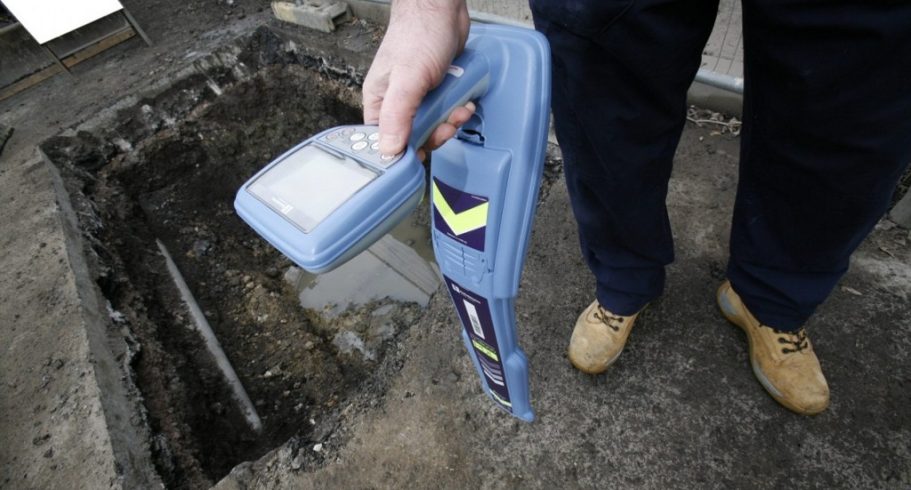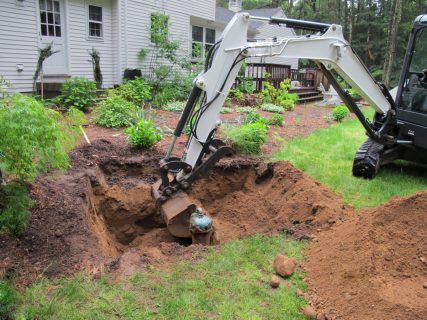


Service Locating Equipment

Precision Locator
We have chosen the RD8100® cable locator and after lots of research we found it be engineered to deliver high precision for damage prevention when locating buried cables and pipes. This advanced range of underground utility locators offers optional integrated GPS and usage logging.
RD8100 is one of the most advanced high-precision cable locators available, and builds on over 40 years of pedigree to deliver performance, quality and durability. Containing a unique arrangement of 5 custom-manufactured, precision-ground antennas, it allows you to choose the best method to locate specific pipes and cables.
With utility infrastructures becoming more complex, locate professionals like K&J Scanning require more powerful, flexible tools. Features such as Current Direction and iLOC™ on the cable locator combine with the versatile Tx Transmitter range to deliver high-precision locates even in tough conditions.

Multifunction Signal Transmitter
Based on a fully digital platform, the Tx signal transmitters has been designed to complement Radiodetection’s advanced high-precision cable and pipe locators including the RD8200 and Marker Locator ranges
The Tx-10 has the highest power capability with both Fault-Find and CD modes as standard.
All transmitters feature constant current across their entire bandwidth in all modes (direct connect, clamp or inductive mode), and deliver convenience on-site with an IP65 ingress protection rating, removable accessory tray and a large, high-contrast, backlit LCD screen.

Induction Clamps
We have a range of sizes of induction clamps to improve the quality of signal we can put into the cables to give us a safe and straightforward way to apply the signal to pipe or cable to enable accurate tracing of this service.

Traced Rodders
Using non invasive detectable rods to locate and/or map underground conduit or pipe saves our clients $$$ in digging or trenching costs. Attaching a standard pipe and cable locator transmitter to the rod adaptor allows the EMF locator to locate the services easily. A copper wire inside the fibreglass inner core is energised with an electromagnetic signal that is detectable from above ground using our EMF signal receiver.
We have different sized traced rodders that allow us to trace all sizes of services underground.

Sonde
We utilise a sonde, which is a small battery operated transmitter which in typical use would be screwed to the end of a traced rod and pushed down the pipe so that we can accurately locate a pipe blockage with enormous cost and time saving potential for our clients.
-
FREQUENTLY ASKED QUESTIONS
Location Services FAQs
Similar to fibre we cannot locate using the EMF locator on its own but use the Traced Rodders to feed into the pipe before putting a signal through it to get route and depth readings.
Yes, although steel reinforcing within the concrete can distort signal although utilising specialist techniques we can and do still locate the services.
Yes, we have successfully done this for numerous clients who had spent a lot of time (and $$$) digging trying to locate blockages before engaging our services.
Fibre itself is not picked up by EMF and we cannot put a signal through it, what we do is utilise Tracer Rodder to put in the conduit with the fibre and then we can follow route and get depths reading from the EMF equipment we use. In a lot of cases fibre will utilise same conduit Telstra use which is traceable by EMF.
Australian Standard states power cables should be at 600mm deep although this is not always the case and can never be assumed as correct, we have seen power cable at 150mm deep where tree roots had lifted the conduits up over years.
No, we use specialist clamps which go round the cable/conduit to push a signal through the cable.
No, a common misconception is that the DBYD plans are enough to give you all the info you need prior to starting work. The DBYD plans “should” tell you of all the services/assets in the area you have stated but they are not always complete and/or accurate and also put the liability firmly with who is doing the excavation to investigate (engage location services) further and identify actual routes prior to starting.
No, DBYD plans stop at your boundary and its never a good idea to assume route and depth of services once on your property.
-
CONTACT FORM
Get in touch

